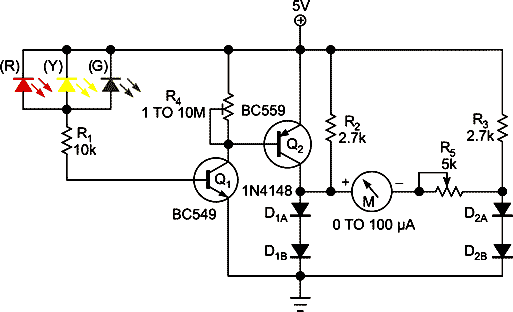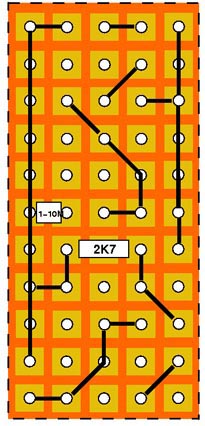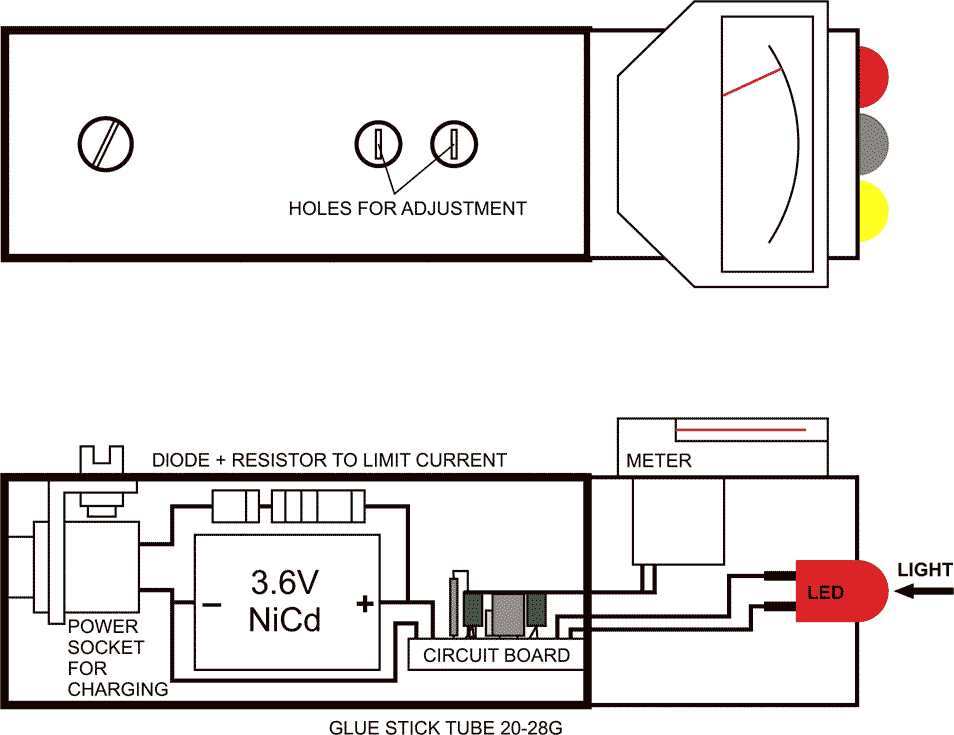Raju Baddi
EDN
Most PN-junction diodes can be used as photodiodes. While not optimized for this application, they do work. When the diode is reverse biased, it will produce a small photovoltaic output as the light level is increased. LEDs are particularly suited for this task because their housings are transparent.
You can construct a simple circuit that will assess the condition of ambient lighting and, because many LEDs’ packages are tinted to enhance their emitted color, may even yield a reasonable evaluation of the detected color. The results are not as effective as those obtained using a high-quality optical filter, which typically has narrow bandpass characteristics, but they can be quite acceptable.
Though the design described here does not produce the accuracy of designs with laboratory-grade photodetectors and transimpedance amplifiers, it can be quickly assembled and will produce usable results at a low cost.
 |
|
| Figure 1. | If the simplest version is required, use an inexpensive volume-unit meter to replace the 0- to 100-μA meter.. |
Three LEDs are used; experimentation will indicate which device has the best sensitivity to which color (Figure 1). The ambient light falling on the LEDs causes some current flow – typically in the range of 10 to 100 nA – through each LED, depending on the applied illumination level. This current flows through the base of a transistor, Q1, and is amplified. Q1’s collector current then splits between potentiometer R4, which acts as a first-stage gain calibration, and the base of Q2.
Q2 provides further amplification and drives the left side of a bridge circuit (D1A and D1B). Note that R2/D1 and R3/D2 form a balanced bridge. Q2’s collector current provides a slight imbalance to the bridge. The meter, M, measures this imbalance. R5 adjusts the sensitivity of the meter.
Set R4 and R5 such that the meter has an appropriate deflection. R4 is useful for selecting the quiescent point; R5 is useful for adjusting the sensitivity.
Before building the circuit, check whether the LEDs can be used as photo sensors. To determine whether a given LED is a good photodiode, check the voltage across the LED using a common digital multimeter set to its most sensitive range – typically 200 mV. Typical output voltage should be approximately 0.3 to 1 mV with typical office illumination.
Appendix
  |
|
 |
|
| Circuit layout and construction details. |
